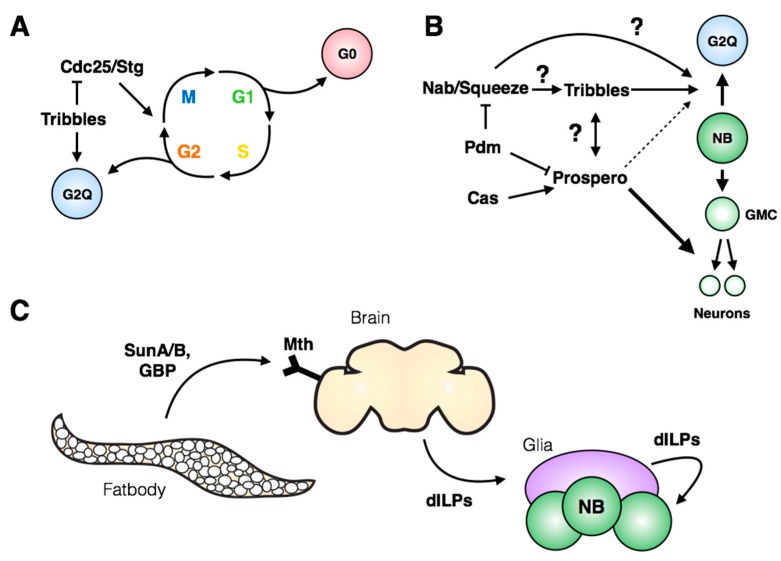Figure 6.
Regulation of neuroblast quiescence and reactivation. (A) The majority of post-embryonic neuroblasts exit the cell cycle at G2 phase (G2Q), while the remaining ~25% display a canonical G0 arrest [73]. Tribbles promotes and maintains quiescence through degradation of Cdc25/Stg and inhibition of Akt signaling (not shown). (B) Prospero regulates neural differentiation and is required for neuroblast quiescence, but the mechanism underlying its ability to induce two different cell fates is unclear. The connections between G2Q and the Prospero regulatory network are also unknown. (C) Secreted factors from the larval fatbody are sensed by the brain, leading to secretion of insulin-like peptides (dILPs). dILPs are also expressed by stellate surface glia, and these act on the neuroblast to promote growth and proliferation.

